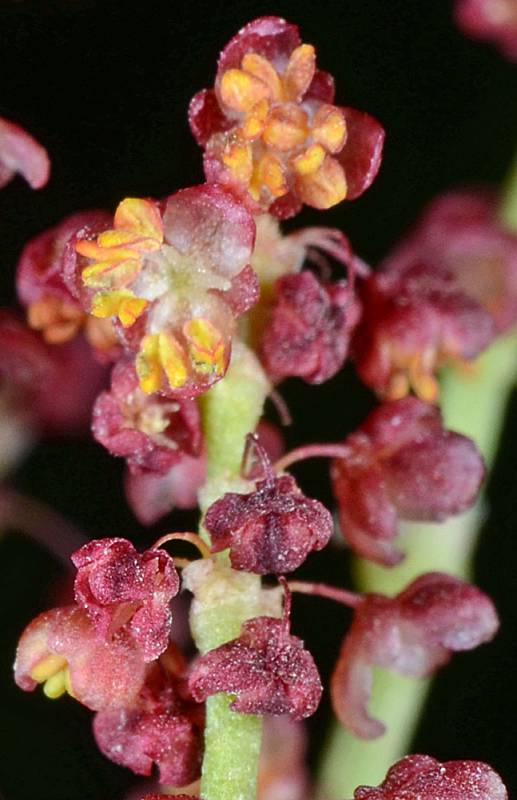Hosted by the University of Washington Herbarium, Burke Museum
Publication: J. Acad. Nat. Sci. Philadelphia. 7: 49. 1834.
Origin: Native
Herbarium search: CPNWH
Notes: FNA5: "Rumex paucifolius is a montane species represented by two chromosome races (diploid and tetraploid) and several ecotypes. Smaller plants from California have been described as var. gracilescens; they are tetraploids and sometimes were regarded as a separate species (Á. Löve and V. Everson 1967; Löve 1986). B. W. Smith (1968) showed that both diploids and tetraploids (and even exceptional spontaneous triploids and individuals with higher polyploid chromosome numbers) occur in many other localities within the range of the species; the differences in chromosome number are not strictly correlated with distribution or morphology. Narrow-leaved ecotypes of R. paucifolius reported by Smith sometimes resemble other narrow-leaved taxa of subg. Acetosella, especially R. beringensis. Rumex paucifolius and R. beringensis may be regarded as morphologically and karyologically transitional between subg. Acetosella and subg. Acetosa. Rumex paucifolius was placed in the monotypic subsect. Paucifoliae Á. Löve & N. Sarkar. Later, Löve transferred it to the segregate genus Acetosella, based mostly on the chromosome number of the species, but morphology suggests it is a member of subg. Acetosa. Probably the best solution of this problem was proposed by Smith, who noted that "the composite range of vegetative, reproductive, and karyotypic characteristics of the forty-odd species now included in the diversified subgenus Acetosa would be only slightly extended by the addition of the five species now classified as Acetosella" (p. 683)."
Last updated 4/17/2020 by David Giblin.

